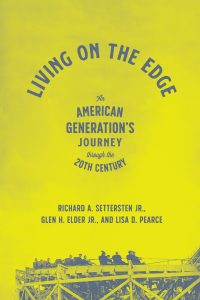Children face continued social isolation, with 21 of the 25 largest school districts in the country choosing remote learning instead of in-person classes this past Fall. This means children will consume more social media than usual. Media images will outnumber — and may well outweigh — real-life interactions with kids their own age. Although boys and girls consume the same amount of media, that extra dose of media exposure may have very different consequences for boys and girls, slowing down ongoing progress toward gender equality.
Do Girls Really “Rule”?
Girls and women have made many strides toward gender equality in the past 30 years. In 1977, two-thirds of Americans said it was better for men to do the breadwinning while women stayed home to take care of the family. By 2016, the figures were reversed: Two-thirds of Americans — and a full three-quarters of millennials – now say men and women should be equal both at work and at home. Thirty years ago, little girls were still routinely cautioned to “act like a lady” and not to compete with boys at school or in sports. Today, girls are encouraged to think they can excel in all sorts of activities formerly confined to men.
Many girls seem to have gotten the “girl power” message. Among Americans under age 35 today, equal numbers of men and women are practicing law, while 60% of physicians are women. Since Title IX was passed in 1972, there has been a nearly ten-fold increase in girls who play high school sports.
Or Is the Real Rule for Girls “Just Be Sexy”?
But at the same time, the mass media deluges girls and women with a very different message, one that encourages them to seek approval by the way they dress and look rather than by their abilities and talents. Beginning in early childhood, girls and women are bombarded with the message that the best way to have value and achieve high status is to be sexy. This message, which sometimes masquerades as a form of empowerment, perpetuates stereotypes that may prove just as difficult to overturn as those of “the feminine mystique.” The diffidence and modesty teens and young women were expected to portray in the past has been replaced with an equally restrictive expectation to wear revealing clothes that accentuate breasts and buttocks (surgically enhancing them if necessary), sport just the right amount of make-up to be alluring but not “cheap,” and carry themselves, preferably in high heels, as if constantly trying to attract sexual attention from (adult) men. Both ideals of women, past and present, center around their self-presentation, previously as passively submissive, now as active architects of their sexual objectification.
This message starts early. When researchers analyzed 10 of the most popular television programs among White and Latina elementary school girls in the U.S., they found that only 38% of the characters were girls, but 75 percent of the time, these girls were presented in sexually objectifying ways. So girls are less likely than boys to be major characters or initiators of action on shows, and when they do make an appearance on the screen, they are typically wearing skimpy clothing, making comments about their bodies, and flirting with the boys’ characters. This delivers a two-pronged message: girls are less important overall than boys, and the only way to be important – to be noticed – is to be sexy, attractive, and flirty with boys.
Sexualized Messages Are Everywhere
On average, children in elementary school watch four and a half hours of television a day: At this rate of exposure, children see approximately 78,069 examples of “sexy girl” role models just in children’s programming alone every year. And with schools, playgrounds, and after-school activities grounded, children are likely to consume much more media this year.
Sexualized depictions of girls and women are prevalent in nearly all forms of mainstream media, including magazines, video games, music videos, television shows, and movies. A 2017 study published in Pediatrics reported that sexually objectifying portrayals of women appear in 52% of all magazine advertisements and 59% of music videos.
Music videos seem to be especially influential in propagating sexualized stereotypes. In a forthcoming paper based on our latest research, we asked seventh-grade boys and girls if they agreed with several statements expressing sexualized gender stereotypes, such as “there is nothing wrong with boys being primarily interested in a girl’s body,” “pretty girls should expect to be flirted with and should learn how to handle it,” and “using her body and looks is the best way for a girl to attract a boy.” All the students endorsed some of these statements, but of the seventh-graders who never watched music videos, only 17 percent agreed with more than half. Among youth who watched between 4 to 6 hours per week, a third agreed with more than half these statements. And among seventh-graders who watched 7 to 9 hours of music videos per week, a full 50% agreed with more than half such statements.
This does not even count the impact of the sexualized toys marketed to young girls. MGA Entertainment, aiming at the 6-to-10 year-old market, recently released “L.O.L. Surprise! Dolls,” outfitted in mini-skirts, high heels or thigh-high boots, and fishnet stockings. As a recent viral video indicated, some of the dolls reveal clingy lingerie when dunked in cold water.
Girls Who Dress Sexy Are Assumed to be Popular, But Not Smart
Even before the end of elementary school, girls come to equate looking sexualized as a marker of popularity and status. Girls, especially prior to puberty, aspire to look sexualized before they have any understanding of sexuality or sexual behavior, and before they see it as a way to attract the attention of boys. Instead they are reflecting what the media has told them their most successful peers are like and who they are most likely to hang out with. When six- to nine-year old girls were asked what outfit would be popular with other girls, they selected an extremely short black mini-skirt and an off-the-shoulder top, an outfit significantly more sexualized than what they said they wore every day, and more sexualized than what they thought boys would like. So looking sexy is seen as a route to be popular among one’s peer group.
On the other hand, looking sexy is not seen as admirable in other ways. Experimental studies with children, teens and adults of both sexes reveal that women and girls who “look sexy” are consistently rated as less nice, less smart, and less competent than similar females who are not portrayed as sexualized. Indeed, they are often denigrated for these traits by the very same girls who aspire to look like them! In our research with elementary school children, children as young as 5 tell us that, compared to non-sexualized girls wearing jeans and a blouse, girls in skimpy clothing with heavy make-up and jewelry are not as nice, not as athletic, and not as smart as the other girls, but that they are more popular. When asked to describe a sexualized girl in a picture, elementary school-aged girls say things like, “Girls that dress like that aren’t very smart” or that they just “act dumb.” Yet a large proportion of girls aspire to look like the sexualized girl, even while saying she has very few redeeming qualities.
The Downside of Succeeding at Sexy
Unfortunately, the association of successful sexual display with shortcomings in other areas can become a self-fulfilling prophecy. Our research with girls aged 11 to 14 shows that when girls prioritize sexualized attractiveness, even temporarily, they appear to deprioritize, within themselves, traits they presume to be incompatible with sexiness, such as intelligence. This tendency shows up even earlier: When researchers gave some elementary-aged girls a sexualized doll (“Fashion” Barbie) to play with for just five minutes, the career aspirations they reported afterwards were more limited than those of girls who played with the non-sexualized Mr. Potato Head. Researchers in both Europe and the US find that, among girls, valuing being sexualized, or even just being exposed to sexualized images of girls, leads to lower levels of working memory (the memory necessary to solve math problems and remember the beginning of the sentence while reading the end of the sentence), plus worse performance in girls’ math, language arts, science, and social studies (in both their grades and standardized test scores).
In our research with middle school girls, we find that seventh-grade girls who believe that girls should be valued for their sexual appeal have lower academic motivation and less confidence in their academic ability by the eighth grade, regardless of how well they are currently doing in school. Even girls who do well in school report downplaying what they know when they value being sexualized, saying they don’t raise their hands even when they know the answer and they pretend to do worse on a test than they actually did. So instead of striving for academic excellence, we see middle school girls concluding that the most direct path to social status is to be sexy, and that requires “playing dumb.”
Once girls adopt a sexualized look, this penalizes them in their interactions with adults, who tend to assume that such girls are not just “playing dumb,” but actually are dumb. For example, when adults were shown pictures of a fifth-grade girl dressed in either a tee-shirt, jeans, and Mary Jane shoes or a short dress with a leopard print cardigan and a purse, the girl dressed in the sexy outfit was described as less intelligent, capable, competent, and determined than the girl in jeans. This held true even when the sexualized girl was described as being an honors student and the president of the student council! Given that adults also rate sexualized girls as less smart than non-sexualized girls, regardless of their academic accomplishments, girls who manage to live up to cultural ideals of sexiness face lowered expectations for their academic success from their teachers, their peers, and themselves.
Constantly seeing sexualized females affects boys and girls in even more disturbing ways. Elementary school girls who aspire to wear sexy clothing and think that sexy equates with popular are more likely to be dissatisfied with their bodies, rating their ideal body as thinner than their actual body; by adolescence, that is associated with disordered eating, an early sign of the eating disorders that disproportionately affect girls in their teens.
Children in elementary school who were exposed to pictures of sexualized women in experimental studies rated those women as less than fully human and less worthy of being helped when in danger than non-sexualized women. In a recent meta-analysis of 59 different studies, researchers documented that the more sexualized media teens are exposed to, the more likely they are to endorse “rape myths,” such as the belief that it is okay for a woman to be raped if she is wearing suggestive clothing. The link between seeing sexualized women in the media and condoning sexual violence towards women was the strongest among White boys between the ages of 11 and 17.
Despite this long-range danger to women, the drive to be sexualized — to assume one’s value comes exclusively from sexual attractiveness — is largely coming from girls (or more precisely, girls’ reactions to the barrage of sexualized media messages) rather than from boys their own age. In our studies with elementary school children, when we ask children to tell us about the sexualized girls, it is girls who recount elaborate stories about why sexualized girls are more popular and attractive. Boys in elementary school are still pretty clueless about the different implications of a girl wearing a belly shirt or a hoodie. This fits our understanding of how stereotypes develop in children: we all pay more attention to the cultural messages that are relevant to us. Girls are closely paying attention to what is valued in women and girls – and despite all the feel-good slogans about “girl power,” the message girls get from the media is that sexiness is valued above everything else. As long as this is the standard girls learn from the mass media, full equality will be unattainable.
Christia Spears Brown, Ph.D., is the Lester and Helen Milich Professor of Children at Risk in the Department of Psychology at the University of Kentucky, Director of the Center for Equality and Social Justice, and author of Parenting Beyond Pink and Blue: Raising Kids Free of Gender Stereotypes.
christia.brown@uky.udu







